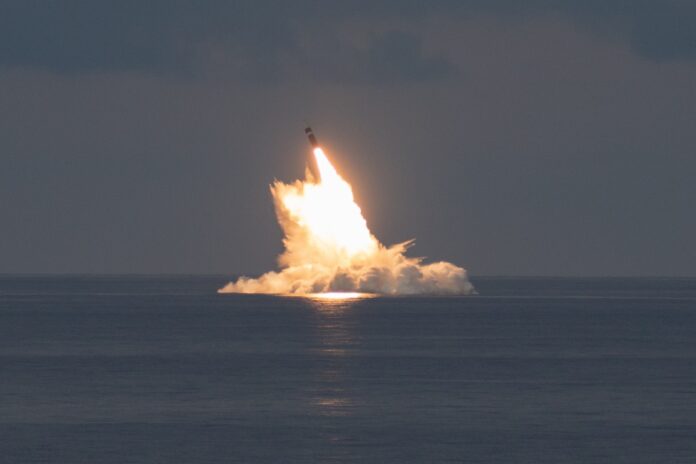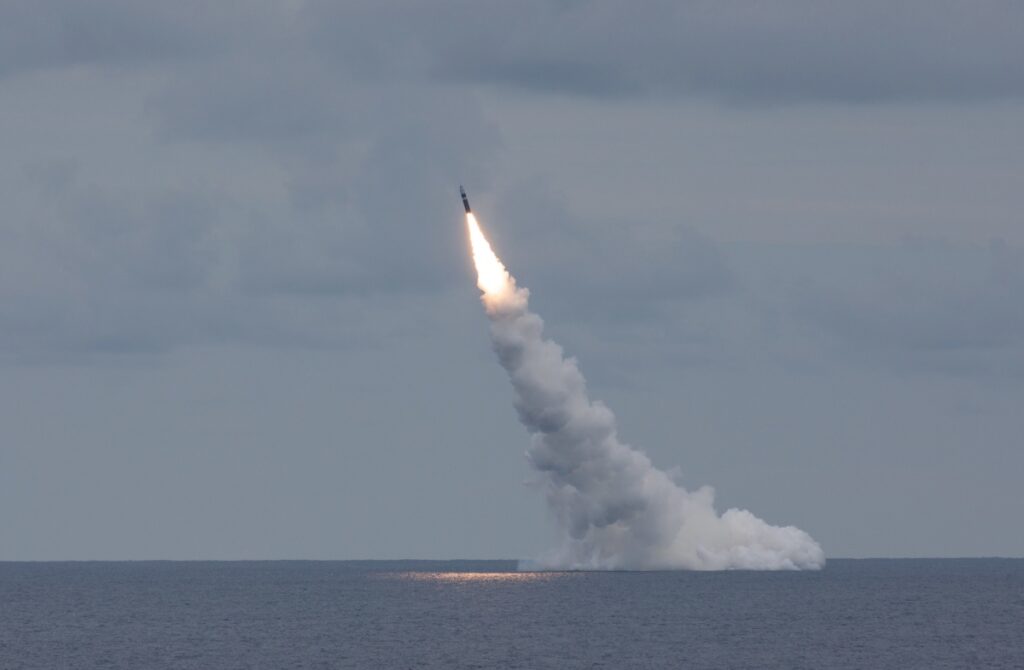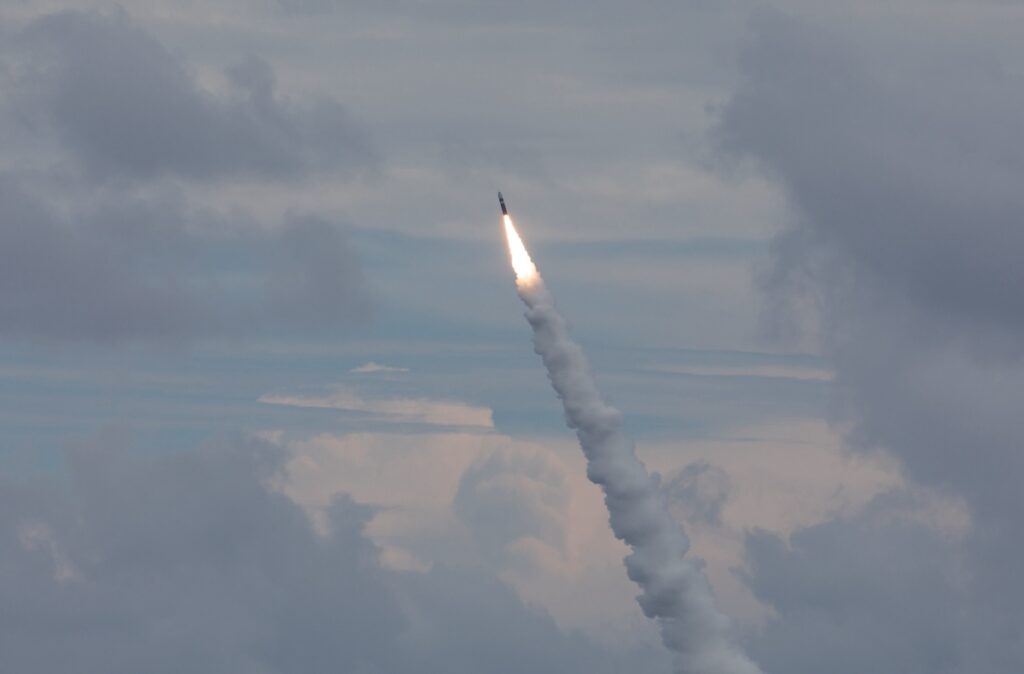
The U.S. Navy conducted a scheduled, two-missile test flight of unarmed life-extended Trident II (D5LE) missiles from USS Wyoming (SSBN-742), an Ohio-class ballistic missile submarine, on the Eastern Test Range off the coast of Cape Canaveral, Florida, Sept. 17.
This successful test was part of a Demonstration and Shakedown Operation, designated DASO-31. The primary objective of a DASO is to evaluate and demonstrate the readiness of the SSBN’s Strategic Weapon System (SWS) and crew before operational deployment following the submarine’s engineered refueling overhaul.

“The DASO test, and others like these, underscore our readiness and capability for 21st Century Strategic Deterrence,” said Rear Adm. Thomas E. Ishee, USSTRATCOM director of Global Operations. “SSBN crews undergo constant training and regularly planned testing to ensure the weapons systems remain ready and reliable. The Sailors and support element who make up the silent service prove every day they are capable and prepared to protect America and its allies.”
This launch marks 184 successful missile test flights of the Trident II (D5 & D5LE) SWS.
“Today’s [Sept. 17] test demonstrates the unmatched reliability of our sea-based nuclear deterrent, which is made possible by a dedicated team of military, civilian and industry partners who bring expertise and dedication to the mission that is truly extraordinary,” said Vice Adm. Johnny R. Wolfe, director of the Navy’s Strategic Systems Programs. Further, “This same team is now developing the next generation of the Trident Strategic Weapon System, which will extend our sea-based strategic deterrent through 2084.”

The Trident strategic weapon system is highly accurate and reliable. The Trident II (D5) missiles recently underwent a life extension program to address potential impacts from aging and obsolescence. The life-extended missiles – Trident II (D5LE) – are now being deployed to the Fleet and will serve for the remaining service life of U.S Ohio-class and United Kingdom Vanguard-class SSBNs, and as the initial load-out for the U.S. Columbia-class and U.K. Dreadnought-class SSBNs.
USS Maine (SSBN-741) successfully executed the Navy’s last DASO in February 2020 off the coast of San Diego, California. The Navy’s most recent flight test – a Commander’s Evaluation Test – was a series of four launches in February 2021 off the coast of Florida. Each of these flight tests were of the life-extended Trident II (D5LE) missiles.
Flight test missiles are not armed, and safety of the public and the crew conducting the mission is paramount. The launches were conducted from the sea, the missile flew over the sea, and landed in the sea. At no time did the missile fly over land.
The missile test was not conducted in response to any ongoing world events, nor as a demonstration of power. Test launches – including DASOs – are scheduled years in advance.
Strategic Systems Programs is the U.S. Navy command that provides cradle-to-grave lifecycle support for the U.S. Navy’s strategic weapon systems. This includes training, systems, equipment, facilities and personnel responsible for ensuring the safety, security- and effectiveness of the nation’s Submarine Launched Ballistic Missile (SLBM) Trident II (D5LE) strategic weapon system.
SLBMs are the sea-based leg of the nation’s strategic nuclear deterrent Triad that also includes the U.S. Air Force’s intercontinental ballistic missiles (ICBM) and nuclear-capable bombers. Each part of the Triad provides unique capabilities and advantages.

The sea-based leg makes up the majority – approximately 70 percent – of the U.S.’s deployed strategic nuclear deterrent Triad. The SLBM is the most survivable leg of the triad, provides a persistent presence, and allows for flexible concepts of operations.
Check out Naval Library App to find out the specifications of the U.S. Navy submarines and missiles.




